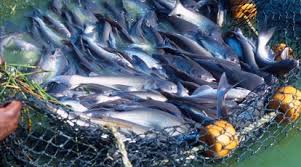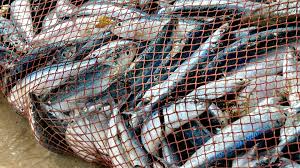This article discusses the history of Fisheries Environmental Impact Assessment (FEIA). It explores how Environmental Impact Assessment (EIA) has developed over time, particularly its application in the fisheries sector, and highlights key trends and events in its evolution.
Read Also: 14 Medicinal Health Benefits of Epimedium grandiflorum (Horny Goat Weed)
History of Environmental Impact Assessment

Rapid industrialization and urbanization in Western countries before the First World War were causing a rapid loss of natural resources. This trend continued after the Second World War, leading to concerns about pollution, quality of life, and environmental stress.
By the early 1960s, investors and stakeholders realized that their projects were having significant negative impacts on the environment, resources, raw materials, and people. As a result, pressure groups were formed, aiming to develop a tool that could be used to protect the environment in the face of development projects.
The United States of America (USA) responded to these concerns by establishing the National Environmental Policy Act in 1970, which was designed to promote environmental protection. The USA became the first country to enact legislation related to EIA, making it the first time that EIA became an official tool for protecting the environment.
The United Nations Conference on the Environment, held in Stockholm in 1972, and subsequent conventions, further formalized EIA practices. Currently, all developed countries have enacted environmental laws, while many developing countries are still in the process of adopting them (Lee, 1995). Multilateral and bilateral lenders have also included EIA requirements in their project eligibility criteria (OECD, 1996).
Initially, EIA was not readily accepted in developing countries. Developers resisted it, arguing that it was anti-development because the laws and policies supporting it required that projects causing negative impacts be stopped. EIA was seen as just another bureaucratic obstacle to development.
Additionally, it was perceived as a tool used by industrialized nations to keep developing countries in poverty. The fact that experts from foreign countries were often responsible for conducting EIAs in developing nations contributed to the view that EIA was a form of external control. However, over time, the importance of EIAs became more widely recognized, and it is now a statutory requirement in many developing countries.
Traditionally, the decision to undertake a project was based on a single criterion: economic viability. Today, however, environmental and social impacts are considered alongside economic factors, leading to the adoption of the triple bottom line approach: economic, environmental, and social viability (Modak and Biswas, 1999). Over half the countries in the world now have formal EIA systems in place.
Read Also: 10 Medicinal Health Benefits of Podocarpus henkelii (Henkel’s Yellowwood)
Trends in the Development of Environmental Impact Assessment

The introduction and early development of EIA occurred between 1970 and 1975. During this period, the foundations of EIA were established in the USA and were later adopted by a few other countries such as Australia, Canada, and New Zealand. The basic concepts, procedures, and methodologies of EIA were developed during this time.
From the mid-1970s to the early 1980s, the scope and sophistication of EIA began to increase. More advanced techniques, such as risk assessment, were introduced, and guidance on process implementation, such as screening and scoping, was developed. Social impacts became a consideration, and public inquiries and reviews helped drive innovation in leading countries. Although EIA practices were still limited in developing countries, they began to be adopted in nations such as China, Thailand, and the Philippines.
In the early 1980s and 1990s, the EIA process was strengthened and integrated into other areas, such as project appraisal and land use planning. Ecosystem-level changes and cumulative effects began to be addressed, and attention was given to monitoring and follow-up mechanisms. More countries adopted EIA during this period, and the European Community and the World Bank established supra-national and international lending requirements that included EIA.
By the early 1990s, a strategic and sustainability orientation began to take shape in EIA practices. International agreements, laws, policies, and institutional frameworks related to EIA were developed, and there was a marked increase in international training, capacity building, and networking activities.
Strategic Environmental Assessment (SEA) for policies and plans was developed, and sustainability concepts and criteria were included in EIA and SEA practices. EIA is now applied in all OECD countries and many developing and transitional nations (Sadler, 1996).
Do you have any questions, suggestions, or contributions? If so, please feel free to use the comment box below to share your thoughts. We also encourage you to kindly share this information with others who might benefit from it. Since we can’t reach everyone at once, we truly appreciate your help in spreading the word. Thank you so much for your support and for sharing!
Read Also: Six Health Benefits of Sugarcane Juice

